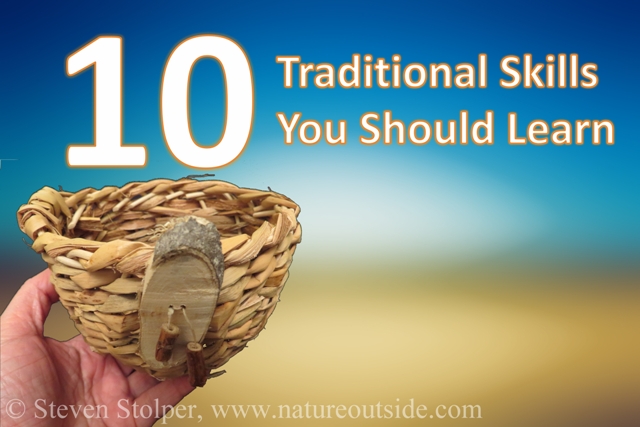
If you spend time outdoors you develop a profound respect for our ancient ancestors. How did we survive before electricity, indoor plumbing, and air conditioning? Before supermarkets, big box stores, and pharmacies? How did we heat our homes and get our clothes? Certainly our ancient ancestors had very different living skills than we do today.
We call these skills bushcraft or traditional skills. But to our ancestors it was just living. And not only did our ancestors survive with these skills, they thrived! They were so successful that they eventually became… us!
This is no small miracle. Mother Nature can be a real bitch! Have you ever been caught out in a storm: rain, hail, lightening, and howling winds? Then you know what I mean. After all, this is the lady who carved the Grand Canyon! She is not to be trifled.
You may pooh-pooh ancient living skills as passe’. But don’t rush to judgment Mr. I-make-my-living-programming-C++. These skills still hold meaning for us today.
Nature and I are two.
— Woody Allen, American film director
Traditional skills still resonate with those who take the time to learn them. Three particular aspects of Traditional skills are valuable in our modern lives.
An experiential relationship with nature
Let’s face it, we most often see nature through our car windows. Sometimes we hike. Sometimes we camp. We even bike or paddle. But how often do you interact with nature?
When you use traditional skills you literally grasp nature. Spongy Tule stems or unyielding flint, natural materials electrify your sense of touch. Freshly cut cedar or delicate mint enchants your sense of smell. The dirt on your hands connects you viscerally to the greater universe.
When you use traditional skills you are in direct physical contact with nature like no other outdoor pursuit.
They engage your mind and body
How creative are you in your job? Be honest, it’s OK.
Traditional skills stretch your creativity. They exercise your hands and body. They increase your dexterity and reveal your inner craftsman.
Practicing these skills sharpens the mind and taps our body’s under-used coordination and kinesthetic sense. I often lose myself for hours in concentration as I work with natural materials.
Traditional skills are better than yoga or tai chi! Because you improve yourself and end up with something cool that you’ve made.
Practical outdoor skills
Knowledge is the key to survival, and the real beauty of that is it doesn’t weigh anything.
– Ray Mears, Bushcraft Instructor
Ray knows what he’s talking about. When you master traditional skills you have another set of resources to rely on in the wilderness. These ancient skill still work! After all, our natural environment hasn’t changed all that much. So as you acquire traditional skills, you gain confidence in the outdoors.
How do I learn Traditional Skills?
The best way to learn is to have an expert teach you. In an earlier post, I show you how to choose a wilderness survival course. These courses teach you how to cope with wilderness emergencies lasting 72 hours, using modern tools and techniques. But traditional skills are harder to learn. I have not found a worthwhile comprehensive class that teaches traditional skills. They tend to offer only a cursory overview of each skill.
Instead, I recommend you find classes that teach individual skills in depth. But to do that, you need an idea of the skills you want to learn.
Below is a list of 10 traditional skills I recommend that beginners explore. Choose the ones you think you’ll like. But try a few others to broaden your experience.
1. Shelter
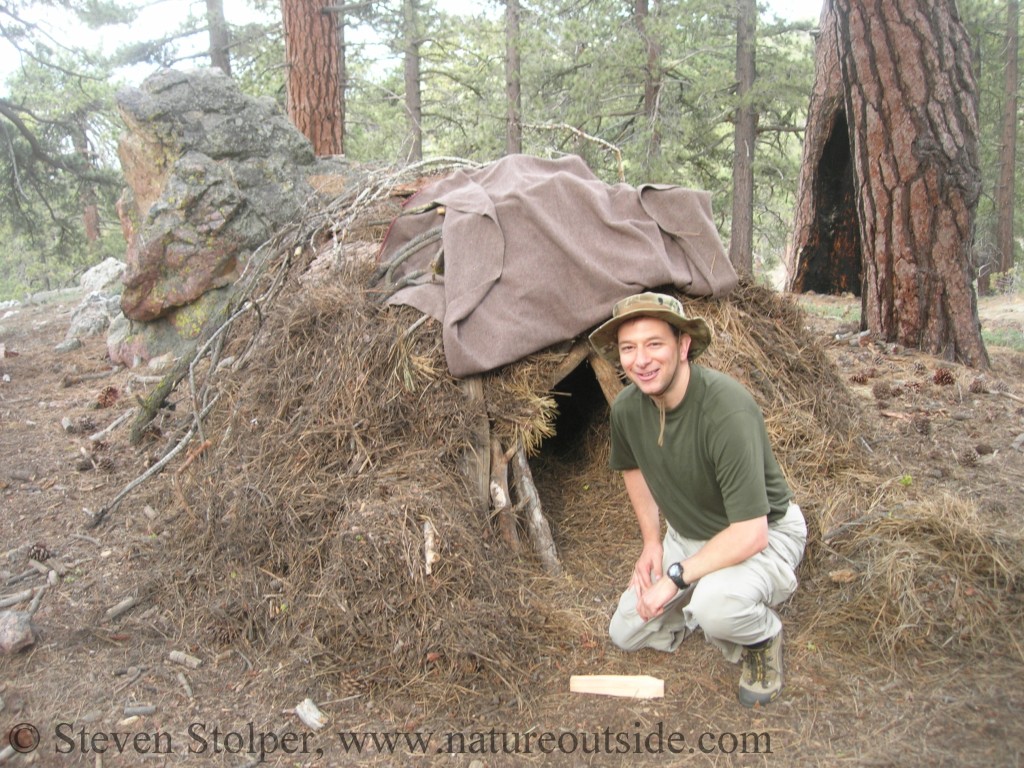
I spent the night in this shelter!
Learning to build natural shelters is fun and practical! Imagine building a shelter and sleeping in it alone overnight. It is one of the most satisfying things I have ever done. Building a shelter is architecture, construction, engineering, and puzzle solving all wrapped up into one. And the principles apply to many natural environments.
I remember the first time I slept alone in a debris hut. The grinning instructors’ last words of encouragement were: “Don’t worry! We have been teaching this class for more than 20 years. We hardly ever have bears drag students out of their shelters!” 😯
2. Fire
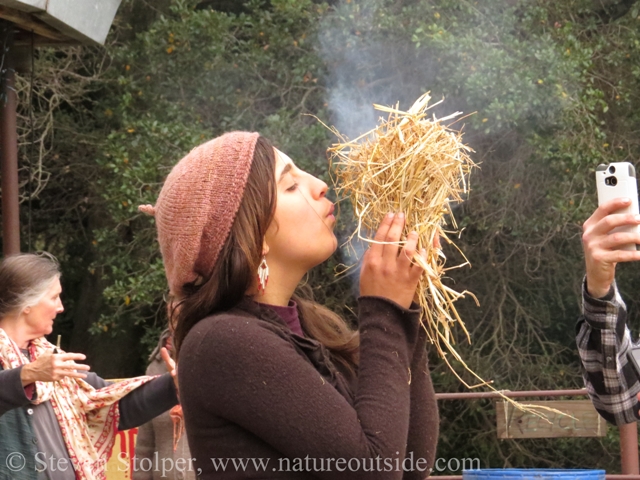
Blowing a tinder bundle into flame is often the last step for many fire-by-friction techniques
If you can make fire from natural materials, you always carry your fire within. One of the most practical and gratifying skills is making fire by friction. Hand drill, bow drill, mouth drill, bamboo fire-saw, there are many techniques from around the world.
Check out these student-interns kindling a fire for guests on their farm using a hand drill.
Remember, the only thing that separates us from the rest of the animal kingdom is fire and reality TV!
3. Cordage Making
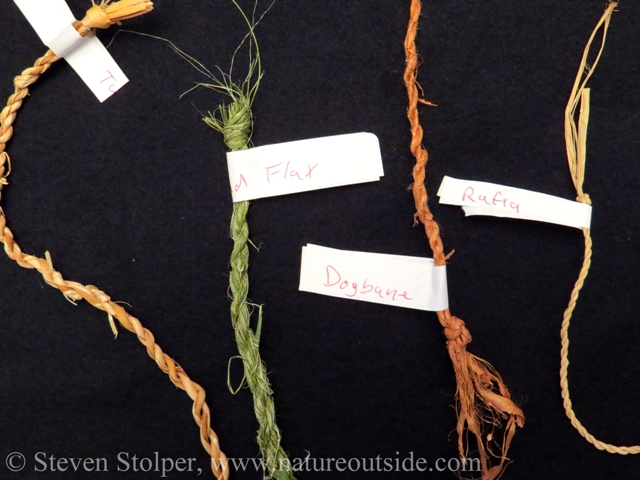
Cordage I made from different plant materials
Did you know that before nails, bolts, and welding, the world was literally tied together? The ability to make cordage from plant materials is one of the easiest traditional skills to master. The two methods taught most often are the reverse-twist and the leg roll. I find both therapeutic. You become mesmerized by the repetitive motion as rope springs to life beneath your fingers.
I use the cordage I make as biodegradable ties for plants in my garden.
4. Basketry
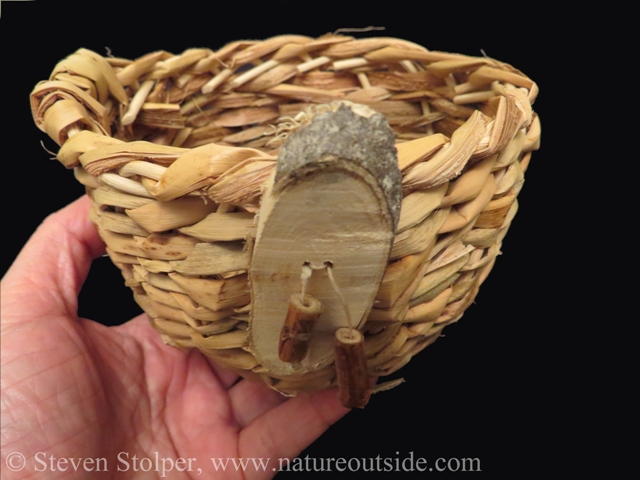
My first Tule basket
Containers are important. Try living your life without them. This includes the pockets in your pants! There are as many types of baskets as there are different uses for them. Basketry is the art of weaving, coiling, and twisting plant material into useful containers that are functional works of art.
5. Flint knapping
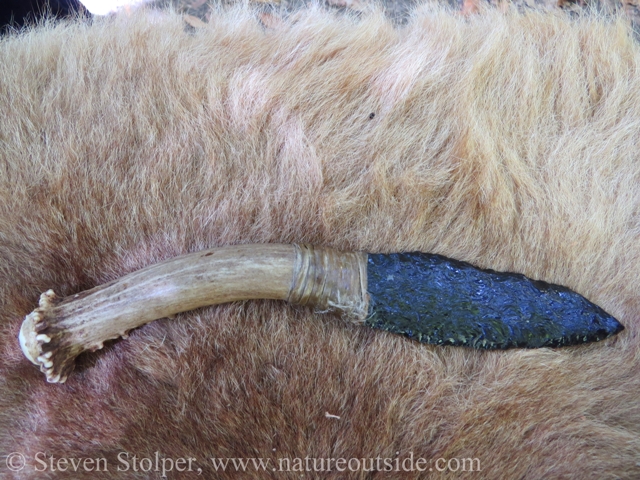
Flint blade attached to deer antler handle. Bound with artificial sinew. Knife by Wayne Powers.
When is the last time you needed to cut something? Did you reach for a knife, or perhaps a pair of scissors? Before refined metals there was wood, stone, and bone. Flint knapping is the craft of making stone tools. Pressure flaking (trimming edges) and conchoidal fracture (breaking) are the two techniques taught most often. With a few simple implements, you can dive into the world of stone age technology.
I should confess, this is my least favorite traditional skill. But it is important that you try different things because what you end up liking may surprise you.
6. Wood carving
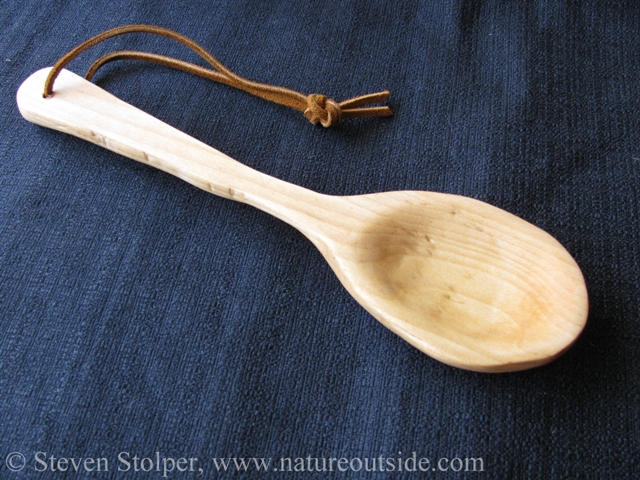
My first spoon. It’s a mess but I still use it today in the kitchen.
Wood carving is one of the most fundamental skills you can learn. You can whittle a simple spoon or a carve a sculptural masterpiece. In the bush, the ability to conjure a pot-hanger for the fire or replace a missing tent peg provides a heartwarming sense of self-reliance. And you can make useful gifts for your friends!
Above is a picture of the very first spoon I carved. What a mess! It is too thick in some places and too narrow in others. It is asymmetric, clunky and ungraceful. But I have grown to love it and still use it today in the kitchen. When you learn a traditional skill, don’t get hung up on the results. Each time you make something you are gaining knowledge. And whatever amounts from your efforts is uniquely “you” and should be treasured because of it.
7. Traps and Snares
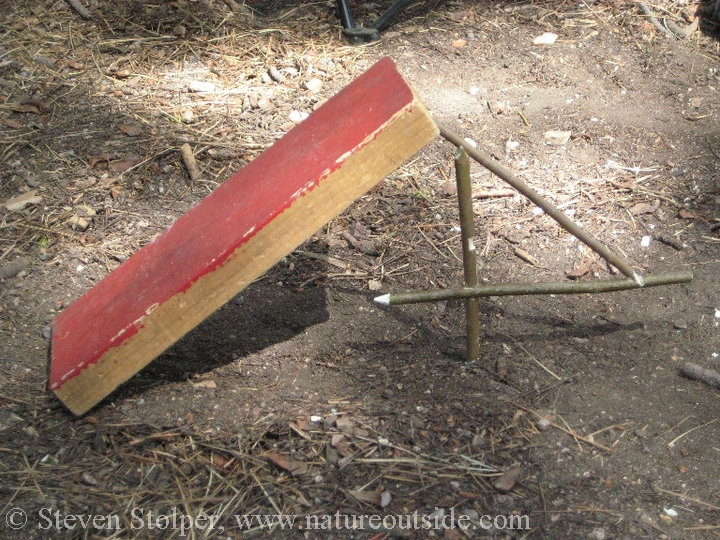
The Figure-4 Deadfall
Making traps and snares combines carving, cordage, knots, and animal tracking. These ingenious devices catch animals for food, passively. You do other things while they harvest dinner. Traps and snares provide meat without you having to expend calories hunting.
You can practice making traps and snares without harming other living creatures. You set them off yourself to see if they work. However, it is very important that you disassemble and remove your traps and snares after you are done practicing. These devices can kill. A survival instructor told me that one of his students accidentally killed his family’s pet cat because he misunderstood the risks of a deadfall he made from a plastic laundry basket.
In many states, using deadfalls and snares are illegal. But in a long-term wilderness survival situation it is useful to know how to passively collect food.
8. Leatherwork

I use my handmade moccasins as lightweight camp shoes and for gliding silently through the forest when I’m observing wildlife
Leather is an amazing natural material. You can use soft leather to make moccasins like in the picture above. You can fashion deerskin pouches. Or use vegetable tanned leather to make knife sheaths, carry cases, and book covers. In another post I show how to create simple leather bookmarks. There is an endless list of exciting and useful things you can craft from leather.
9. Edible and Medicinal Plants
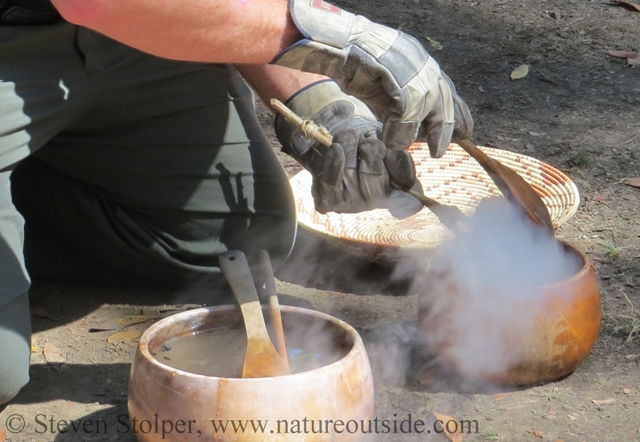
Cooking with rocks using modern wood bowls
My two favorite activities are snacking and hiking. Imagine my delight whenever I can combine them! Learn the food and medicinal qualities of plants in your area. Ethnobotany is a fascinating and delicious subject to learn. Find experts who can instruct you how to use the magical qualities of the plants around you.
10. Animal tracking
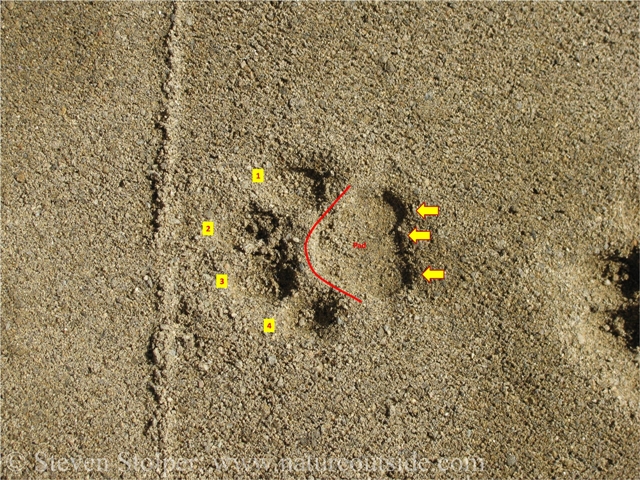
Mountain Lion Track
Animal tracking expands your powers of observation. It requires discipline, concentration, imagination, and stealth. When you lean to read animal tracks, the trail in front of you becomes a newspaper shouting headlines of the day’s events. A fox passed by! Is it male or female? What is it doing? Where is it looking? How fast is it traveling? And where is it heading?
Through observing the comings and goings of animals you learn their ways.
Challenge Yourself: Learn a Traditional Skill
Try to learn a traditional skill. More than that, try to master it. Let your enthusiasm plunge you into a wonderful new world. Connect with nature and enjoy yourself. And let me know how it goes by leaving a comment below.
If you enjoyed this article, you might like others in the Skills Section.



I’m in Northern California and am wondering if there are classes/ workshops/ clubs to learn about all this stuff? Any info would be appreciated!
Nicky, I will send you an Email with suggestions.
I’m interested to know if you have workshops, also.
Glo, I run guided hikes and workshops that teach many of these skills. Workshops I currently offer include wilderness survival, beginning leatherwork, nature awareness, and acorn processing for food. I change the mix of classes depending on what students want, as well as my own interests.
If you want to learn more, my schedule of classes open to the public is on the “events page” of this website (https://www.natureoutside.com/upcoming-events/). Many of my public hikes and workshops are sponsored by nonprofits like California State Parks and the US Fish and Wildlife Service. So they are free-of-charge for the general public!
If you would like to arrange a special class or guided hike, feel free to contact me through the “Contact” page of this website.
Are there any pictures of the dead cat
Sorry, Jason, no pictures of dead mountain lions. I prefer to stalk animals with a camera. I get the gratification of tracking them plus the satisfaction of knowing they are still out there in the wild doing their thing.
Excellent article. Well defined areas with a key on the basics that can keep anyone alive!
Truly enjoyed this!
Thanks, Mark! I’m glad you enjoyed the article.
I live in Prineville, Oregon. I am curious to see if there are any classes or groups that teach/instruct these subjects (I can not seem to find any)?
Allen, I will send you Email with a list of schools in your area.
Thank you! and have a great 4th!
Nice issue Steve!
Thanks, Hal!
I enjoyed reading your article. I just got into fly fishing, and some of the places I’d like to go will require camping in the wilderness (as opposed to camping in a somewhat developed campsite). I’d like to learn about foraging, and found your article while searching for schools near me that teach foraging and other outdoor skills. Despite searching, I couldn’t find any. Do you know of any near Sequoia National Forest?
Margie – I have two places I can refer you. I’ll send you an Email with the names.
I enjoyed your article. I live in Goldendale, WA, do you know of any classes near by? I would be interested in learning some of these skills. Especially edible and medical plants and flint knapping.
Guy, I’m glad you enjoyed the article. I will send you Email with some schools in your area.
I always recommend that you check out state or national parks near you. Inquire among the interpretive rangers and staff to see who they recommend. Many won’t even recognize the terms “bushcraft” or “traditional skills.” But others will be able to steer you to local people who teach traditional skills relevant for your area. The parks may even offer classes themselves.
Let me know how things turn out!
Inspiring article! I live in the bay area (Fremont, CA). I am wondering what are the different skills I can learn which can be helpful in my day to day life (to live in environment friendly fashion) and where can I learn them. Any suggestions are greatly appreciated.
Good question, Alka! One skill I find useful in daily life is the ability to create natural cordage. For example, I make cordage from stinging nettle and use it in the garden to tie plants to supports. The cordage biodegrades after it serves its purpose.
Other skills I commonly use are wild edible and medicinal plants (there are plenty in Fremont), knowledge of how to tie different knots, ability to use a knife safely, navigation, and the ability to predict weather from clouds. And these are just the ones that spring to mind at the moment! You will be surprised how easily you can integrate bushcraft skills in your daily life.
Getting started is easy. I teach some classes near Fremont. Also, I will send you Email to refer you to a very good instructor who teaches near you.
Thank you, Steve! This is great info.
I am glad I kept reading after your qoute from that renowned ancient skills guru…Woody Allen. No more silly useless quotes please.
I’ll try, Bill. But no promises. 🙂
How can I find courses or learn how to master these skills in Montreal, Canada? I can’t find anything up to now. Thanks in advance!
I was able to find a number of options with a simple Internet search. Some of the schools I am familiar with. I’ll send you some links by Email.
I live in Eagle idaho. Also interested in schools. Thanks
Ron, I will send you Email.